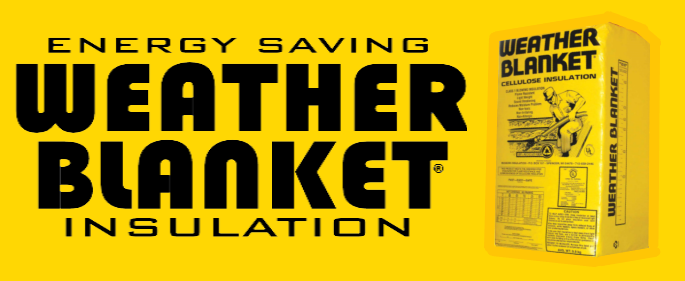Insulation Table of Environmental Facts
Weather Blanket Insulation
Table of Cellulose Insulation Environmental Facts
The table is a summary of information taken from the January 1, 2005, Environmental Building News, and highlights some of the key environmental impacts of selected insulation types.
Please note that there is no "generic" R-value for the different types of insulations. Each manufacturer has different R-values so check the label on the packaging for specific R-values. Weather Blanket Insulation has included a range of R-values to provide you with a basis for comparison of the various insulation R-values.
Cellulose Insulation Environmental Facts Table
| Type | Installation Methods | R-value per inch (RSI/m) | Raw Materials | Pollution From Manufacture | Indoor Air Quality Impacts | Comments |
|---|---|---|---|---|---|---|
| Cellulose | Loose-fill, wall-spray (damp), dense pack, stabilized | 3.6-4.0 (21-26) | Old Newspapers, telephone directories, borates | Negligible | Fibers and chemicals can be irritants | High Recycled content and very low embodied energy |
| Fiberglass | Batts, Loose-fill, semi-rigid board | 3.0-4.0 (15-28) | Silica sand, limestone, boron, recycled glass, PF resin or acrylic resin | Formaldehyde emissions and high energy use during manufacture | Fibers can be irritants | High embodied energy |
| Mineral Wool | Loose-fill, batts, semi-rigid or rigid board | 2.8-3.7 (19-26) | Iron-ore blast furnace slag, natural rock, PF binder | Formaldehyde emissions and high energy use during manufacture | Fibers can be irritants | High Embodied Energy; Rigid board can be an excellent foundation drainage and insulator |
| Cotton | Batts | 3.0-3.7 (21-26) | Cotton and polyester mill scraps (especially denim) | Negligible | Considered safe | Two producers so transportation pollution is higher than other insulation |
| Closed-cell spray polyurethane foams | Spray-in cavity-fill or spray-on roofing | 5.8-6.8 (40-47) | Fossil Fuels; HFC-24.5fa blowing agent; non-brominated flame retardant | High energy use during manufacture; global warming potential from HFC blowing agent | Quite toxic during installation (respirators or supplied air required); allow several days of airing out prior to occupancy | Very High embodied Energy |
| Open-celled, low-density polyurethane foam (Soy) | Spray-in cavity-fill | 3.6-3.8 (25-27) | Fossil Fuels and soybeans; water as blowing agent; non-brominated flame retardant | High energy use during manufacture | Quite toxic during installation (respirators or supplied air required); allow several days of airing out prior to occupancy | Very High embodied energy |


Share On: